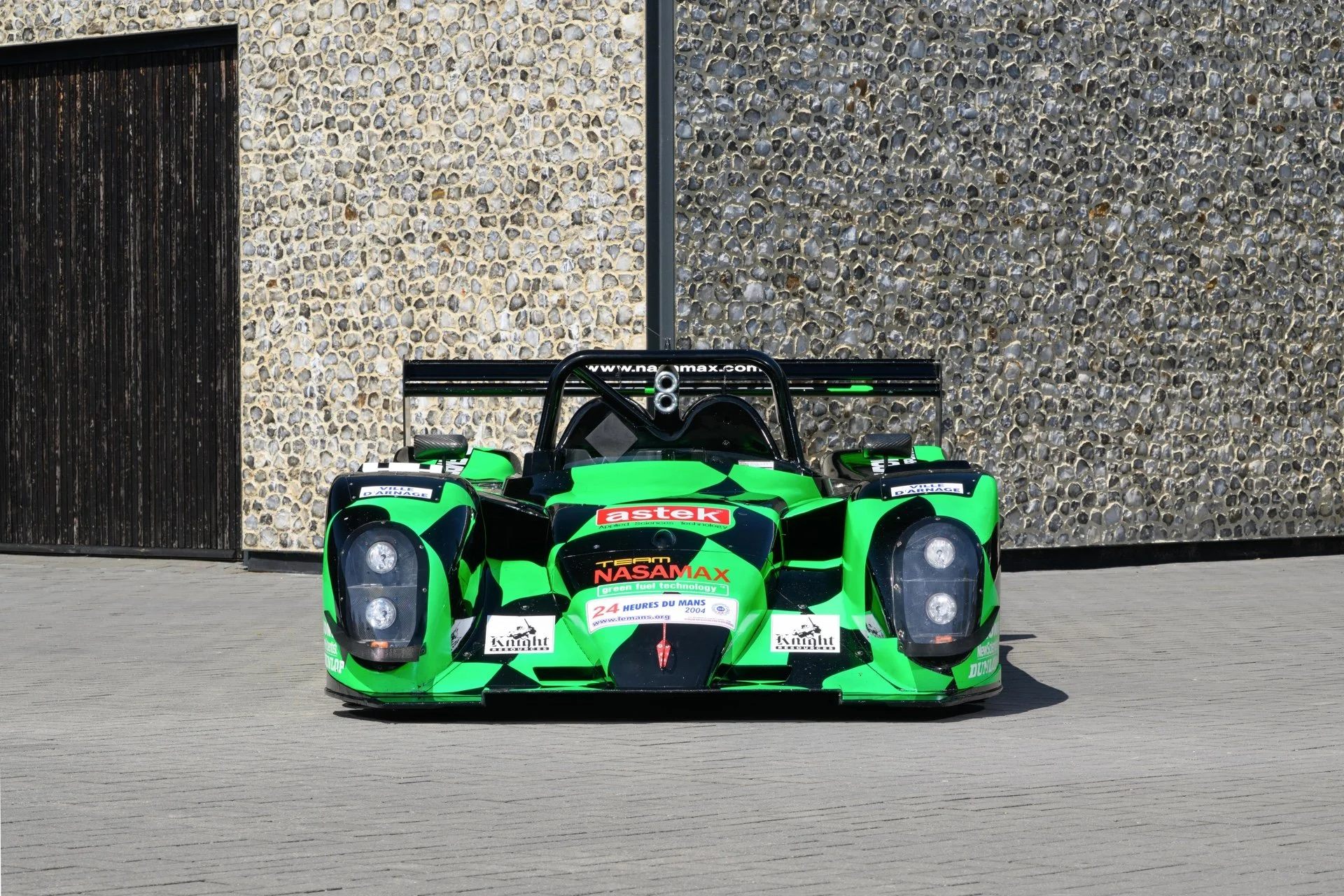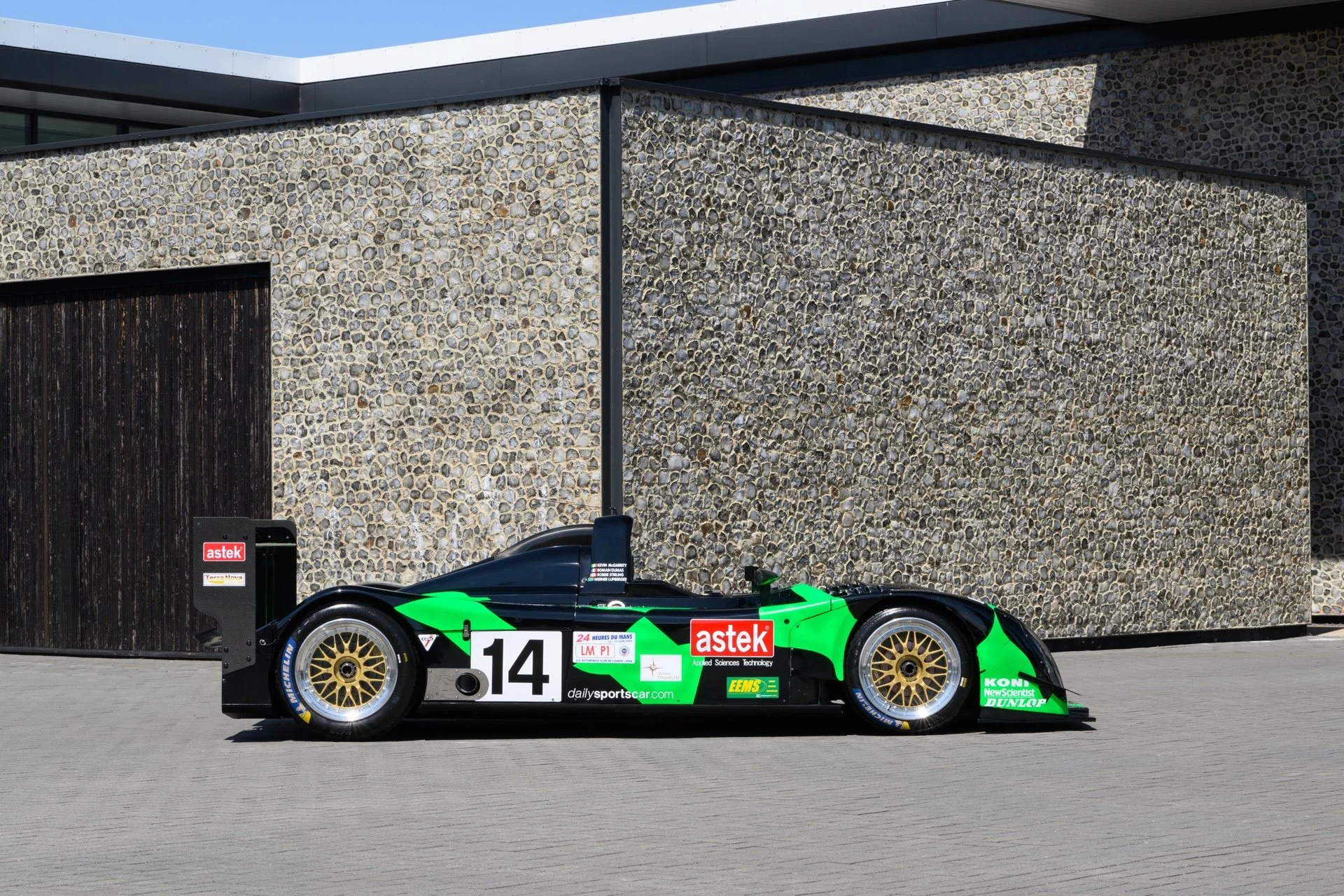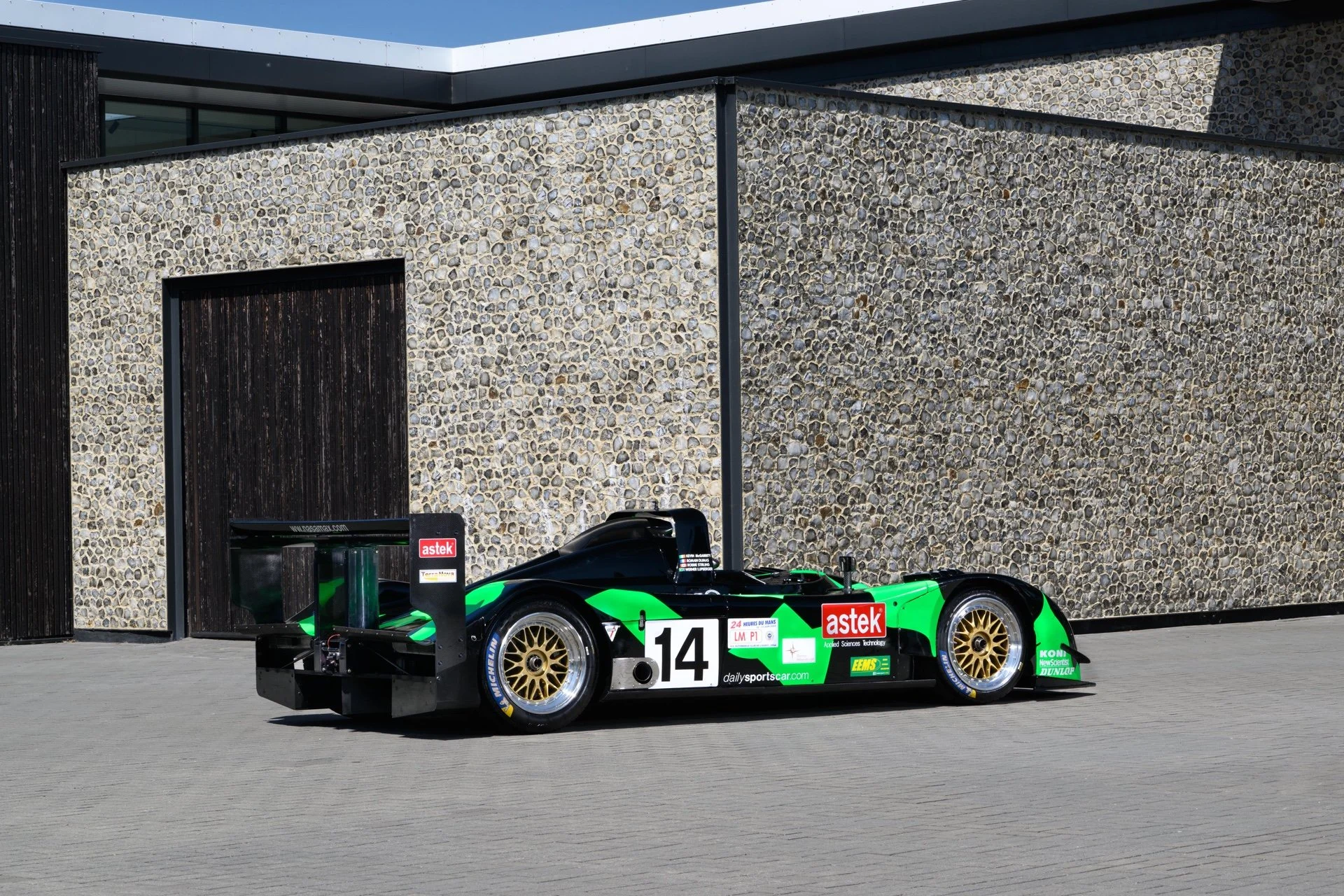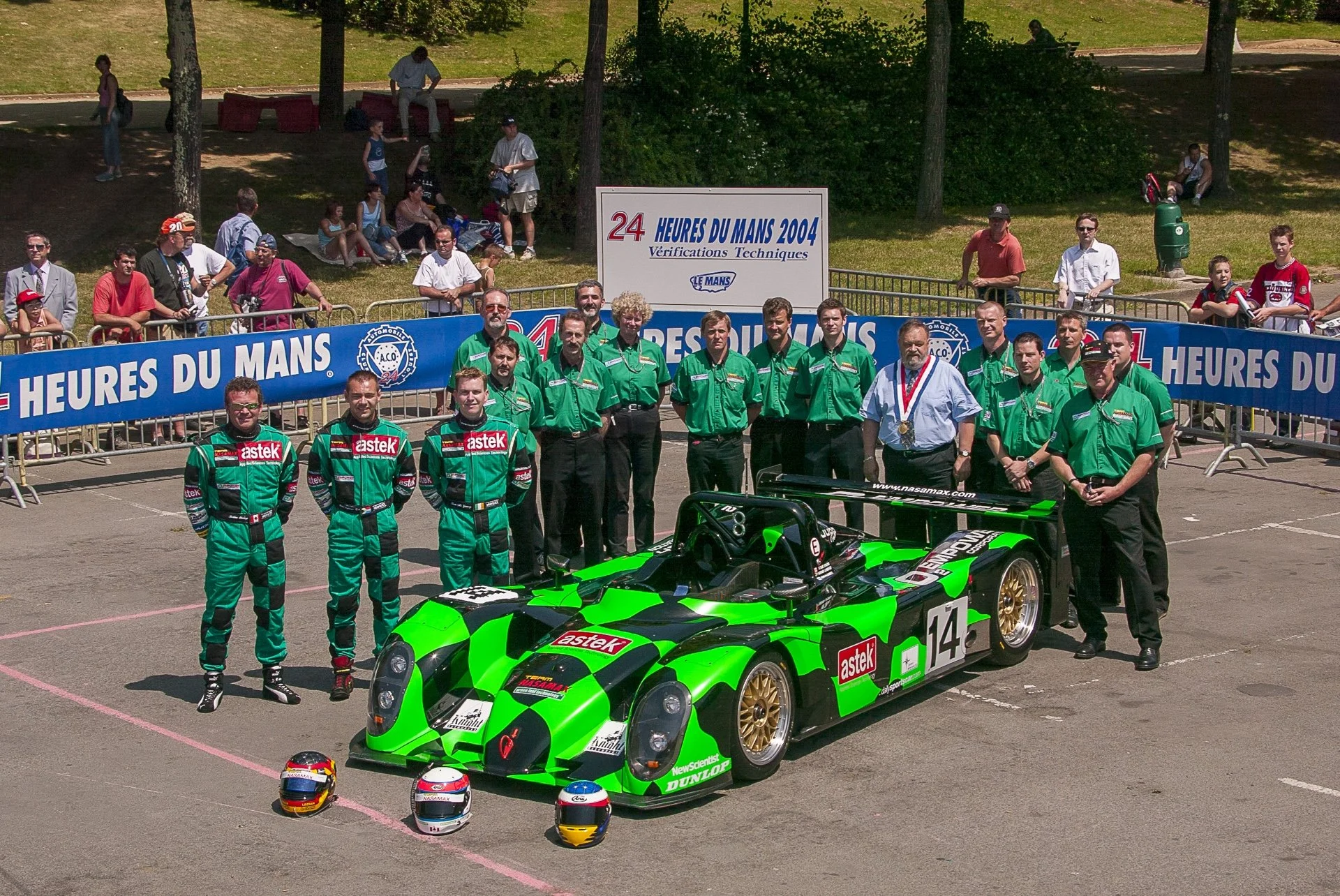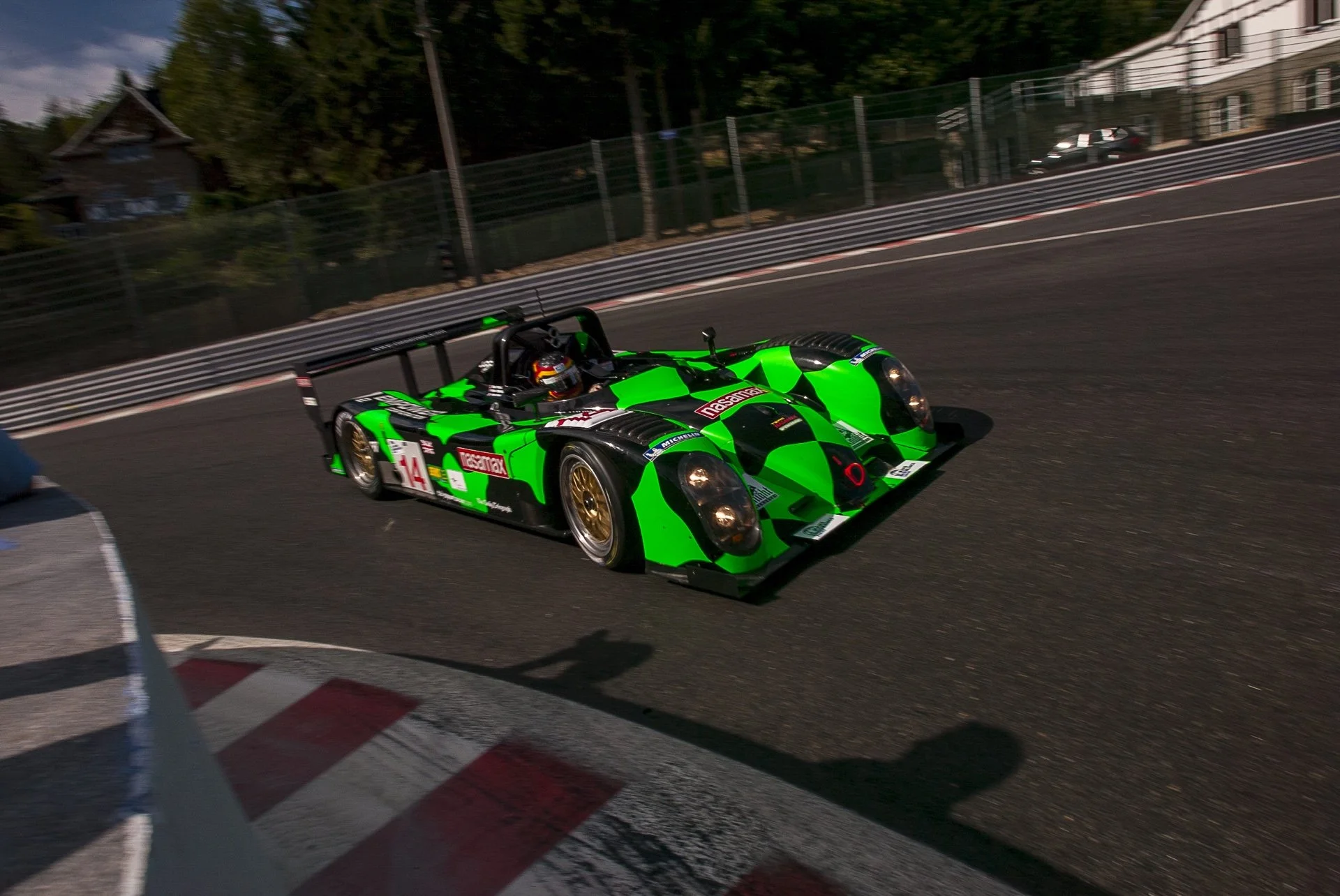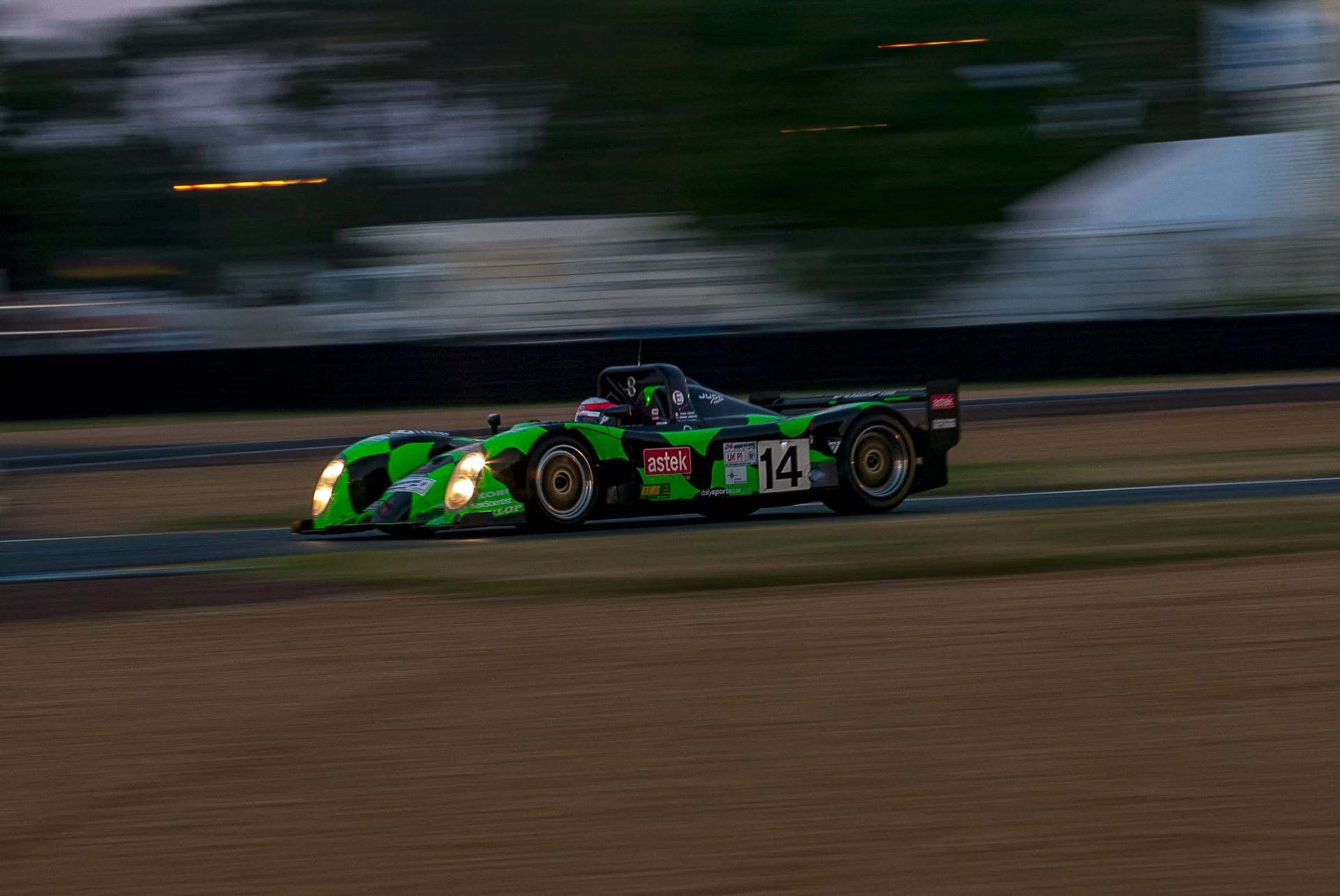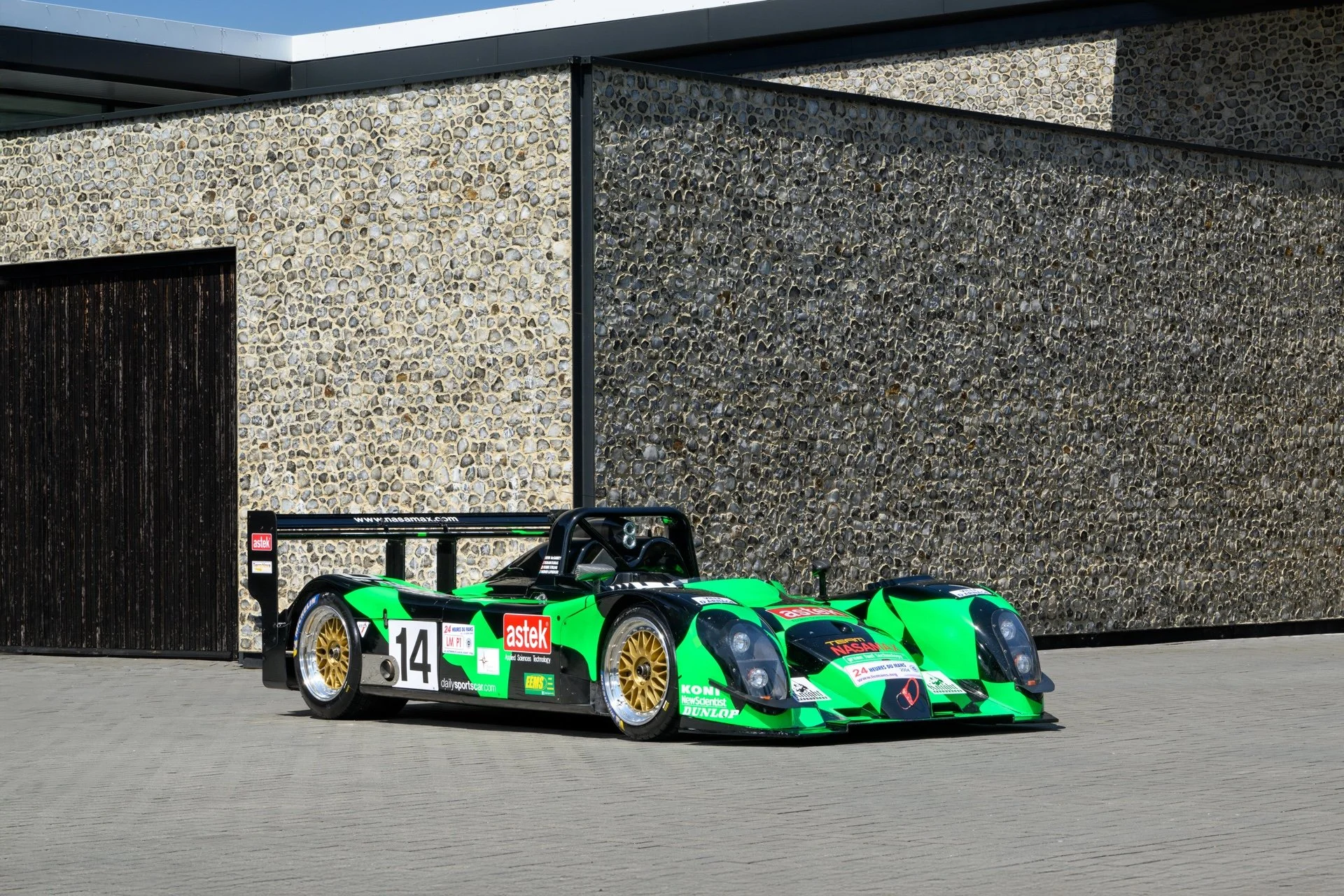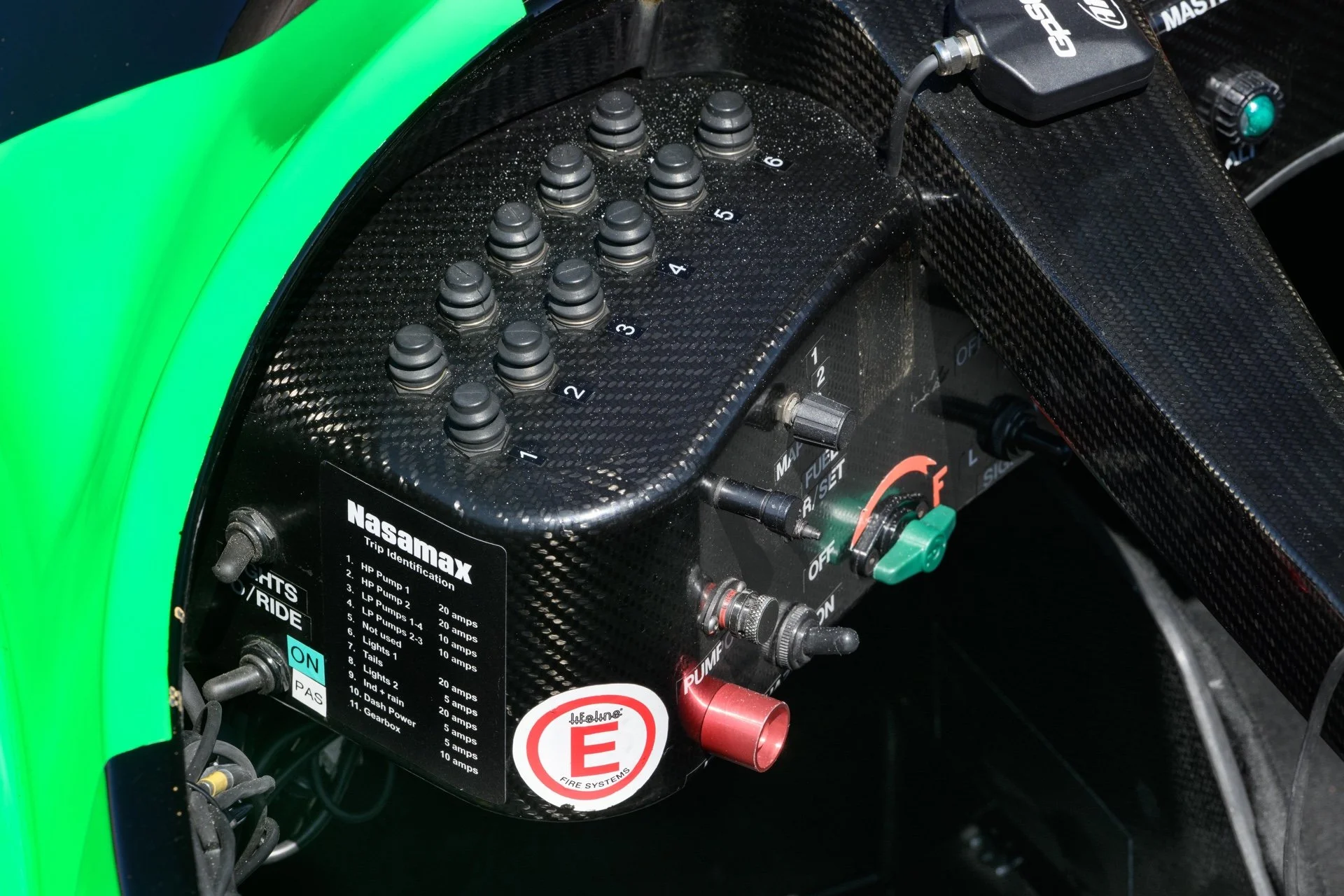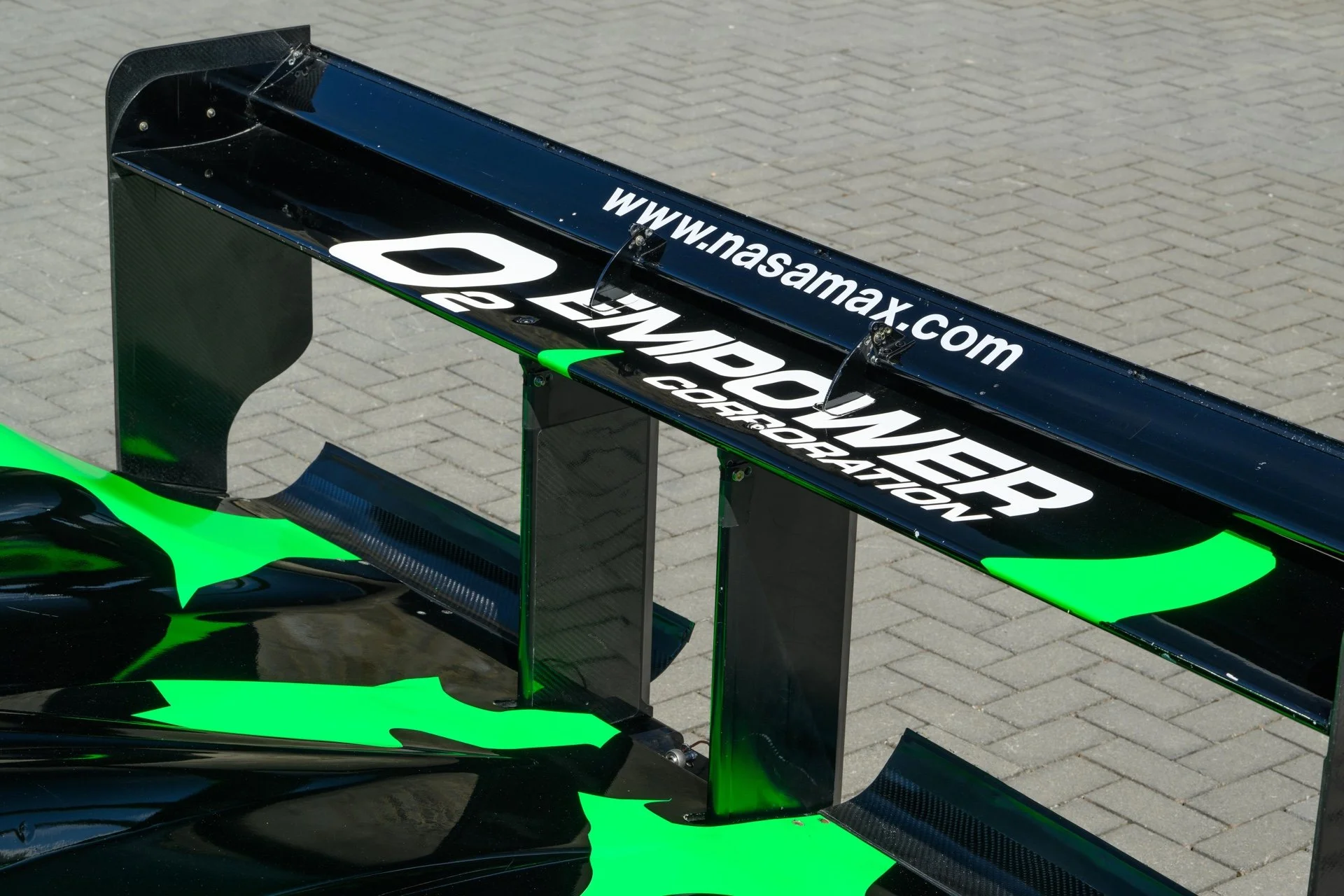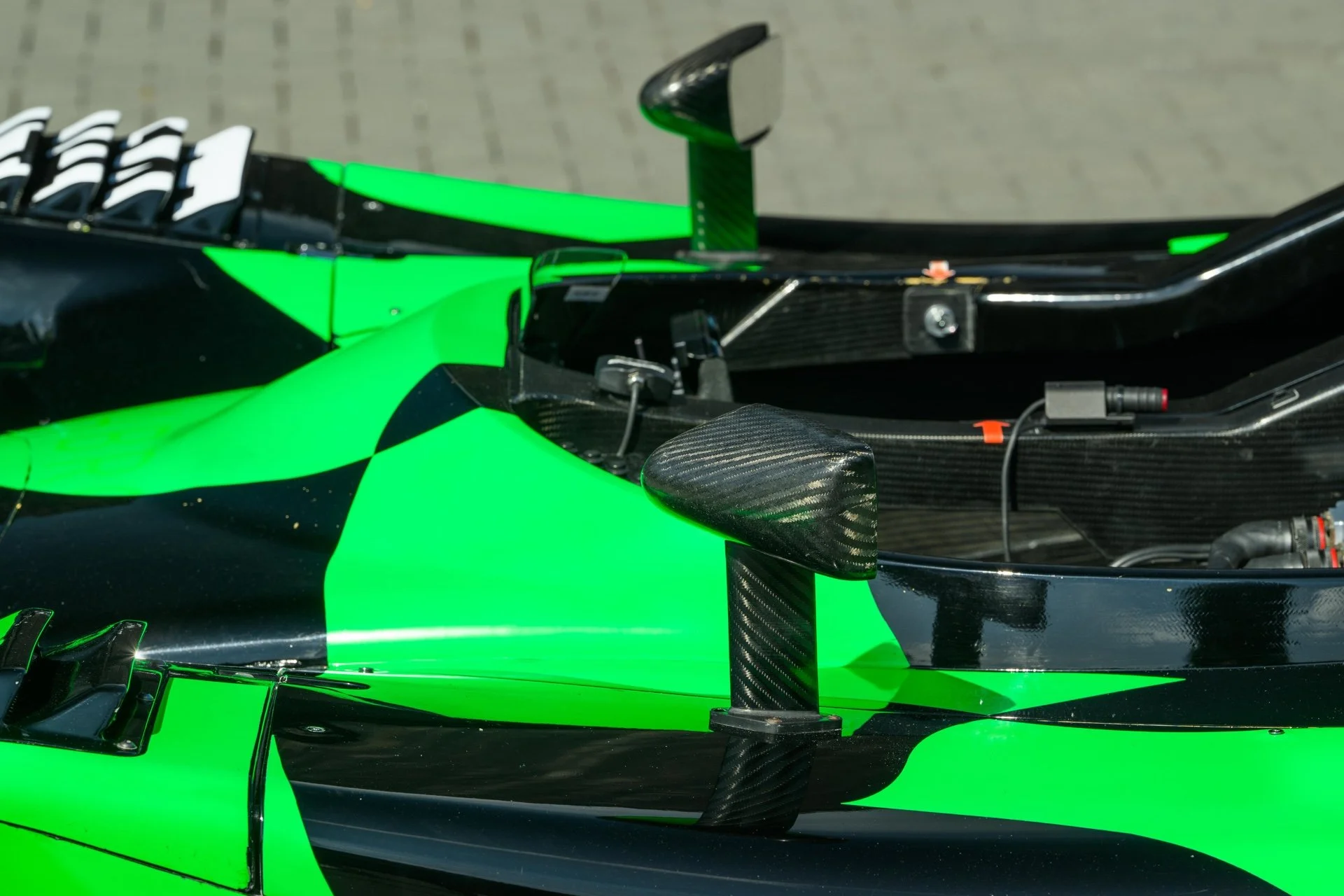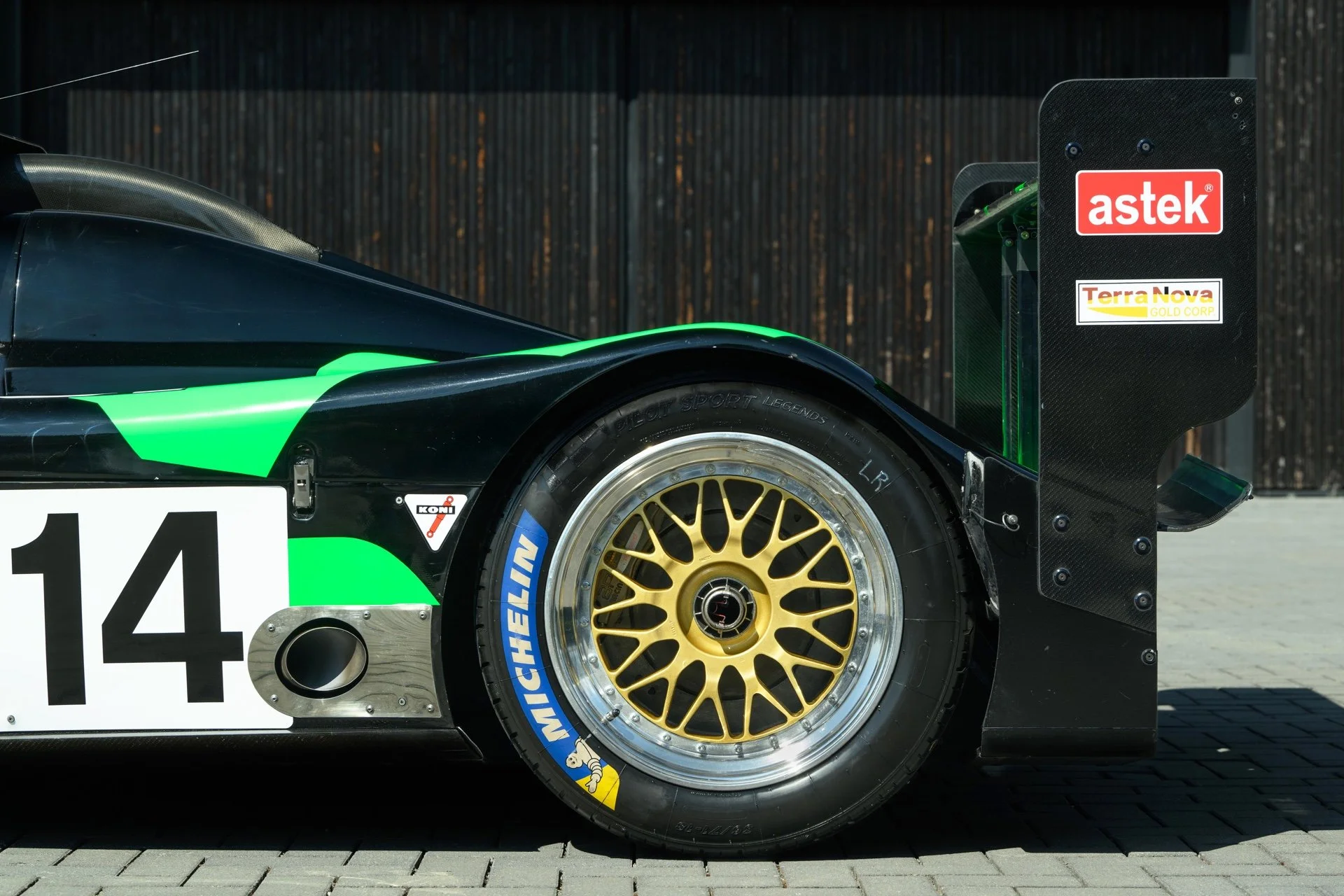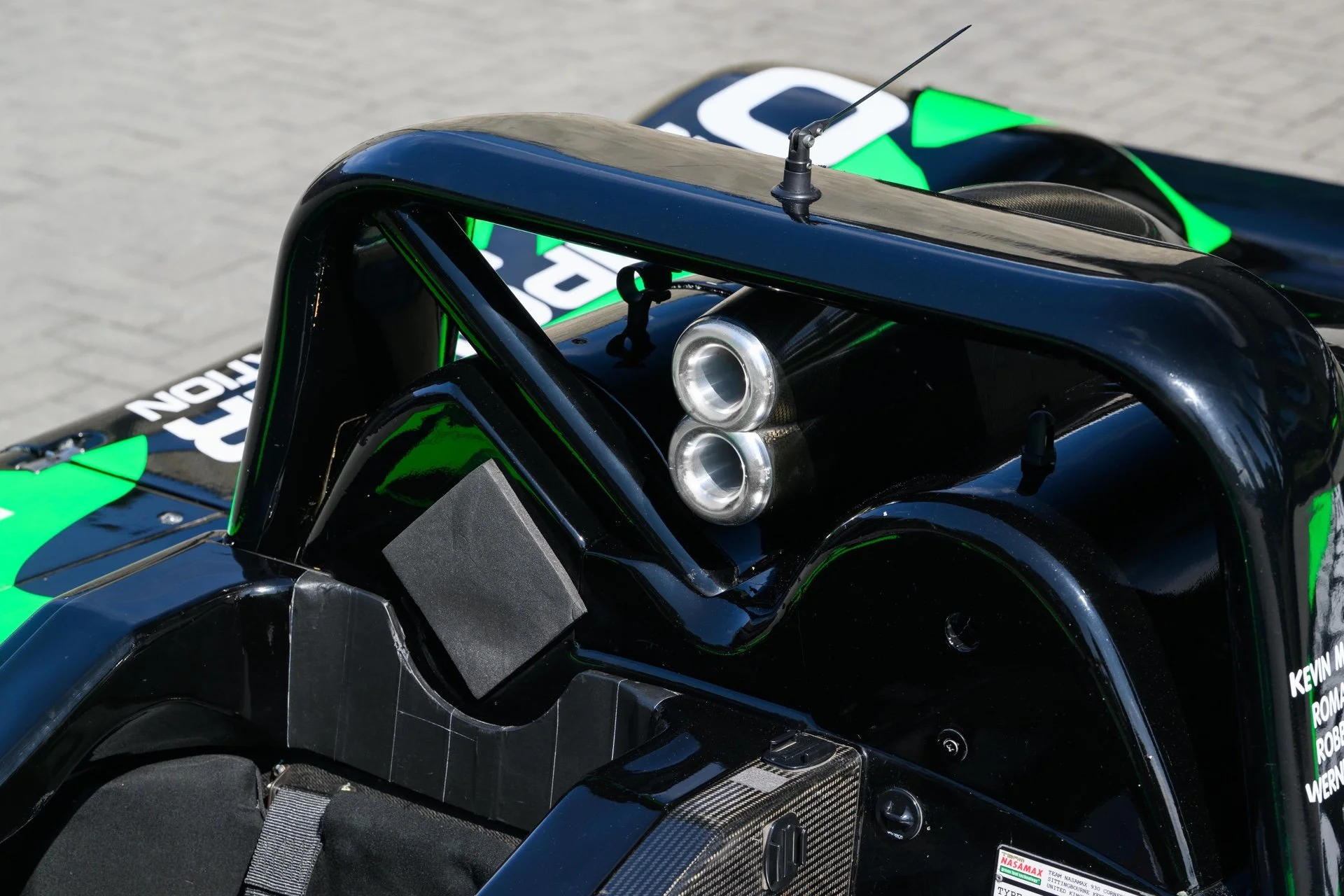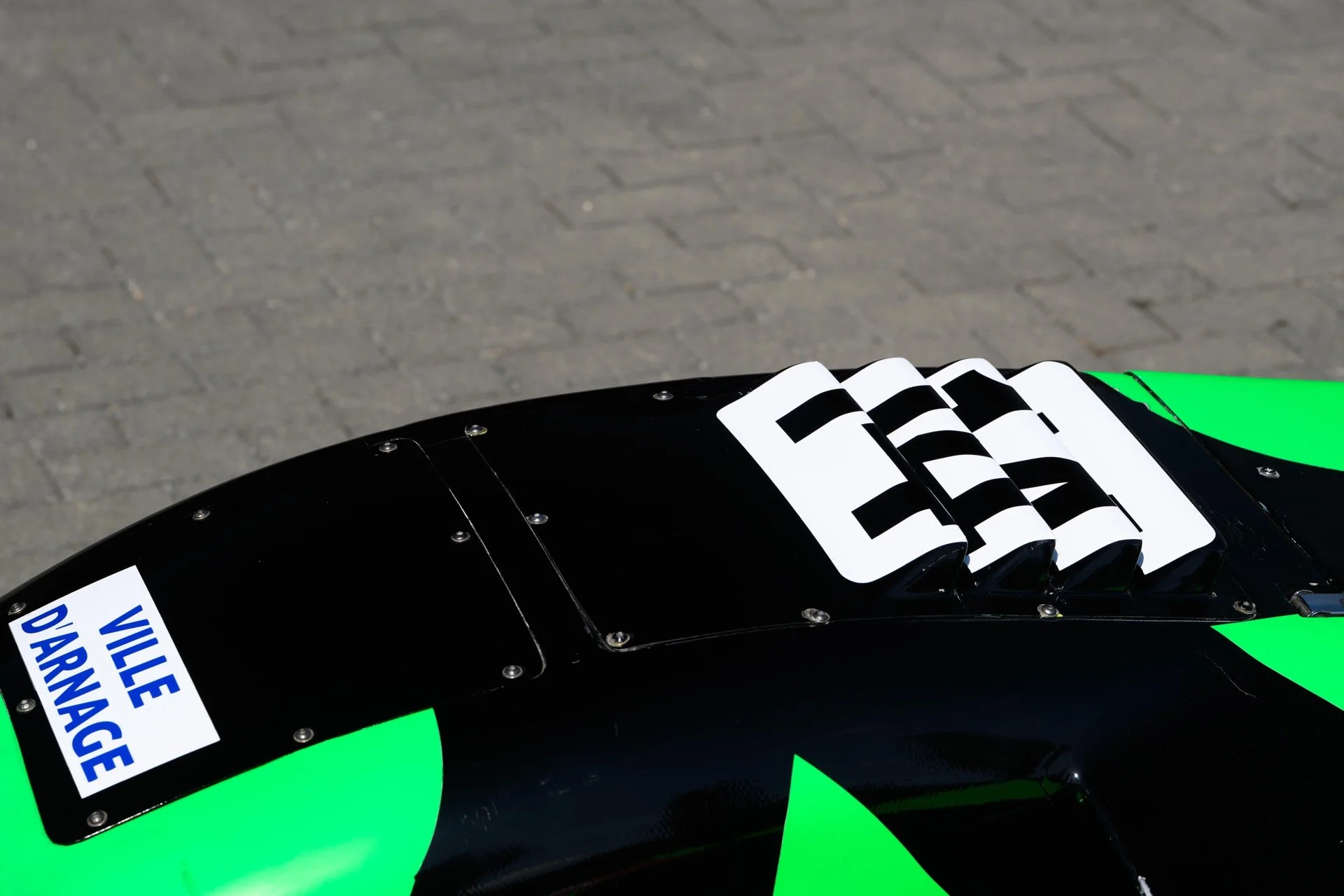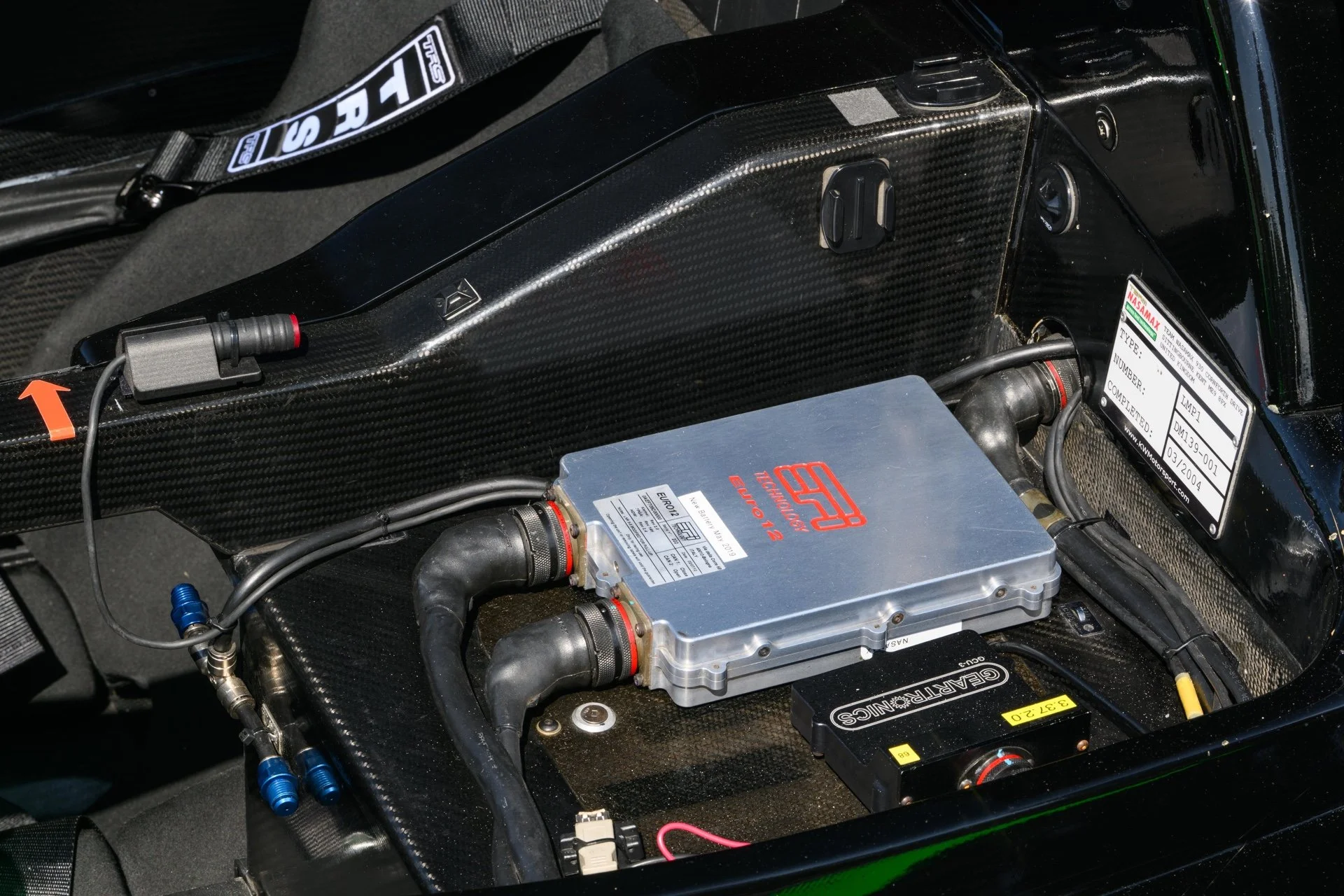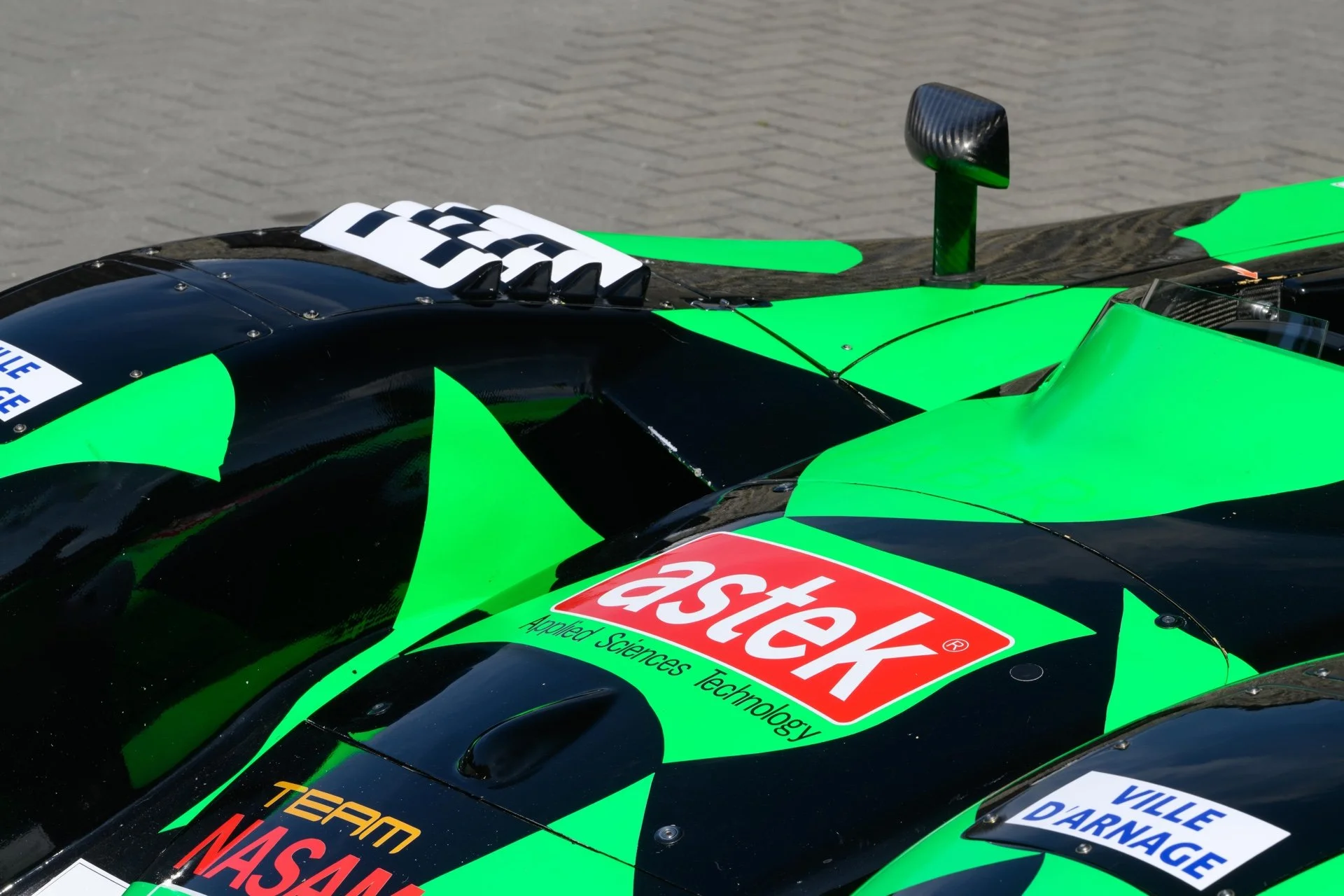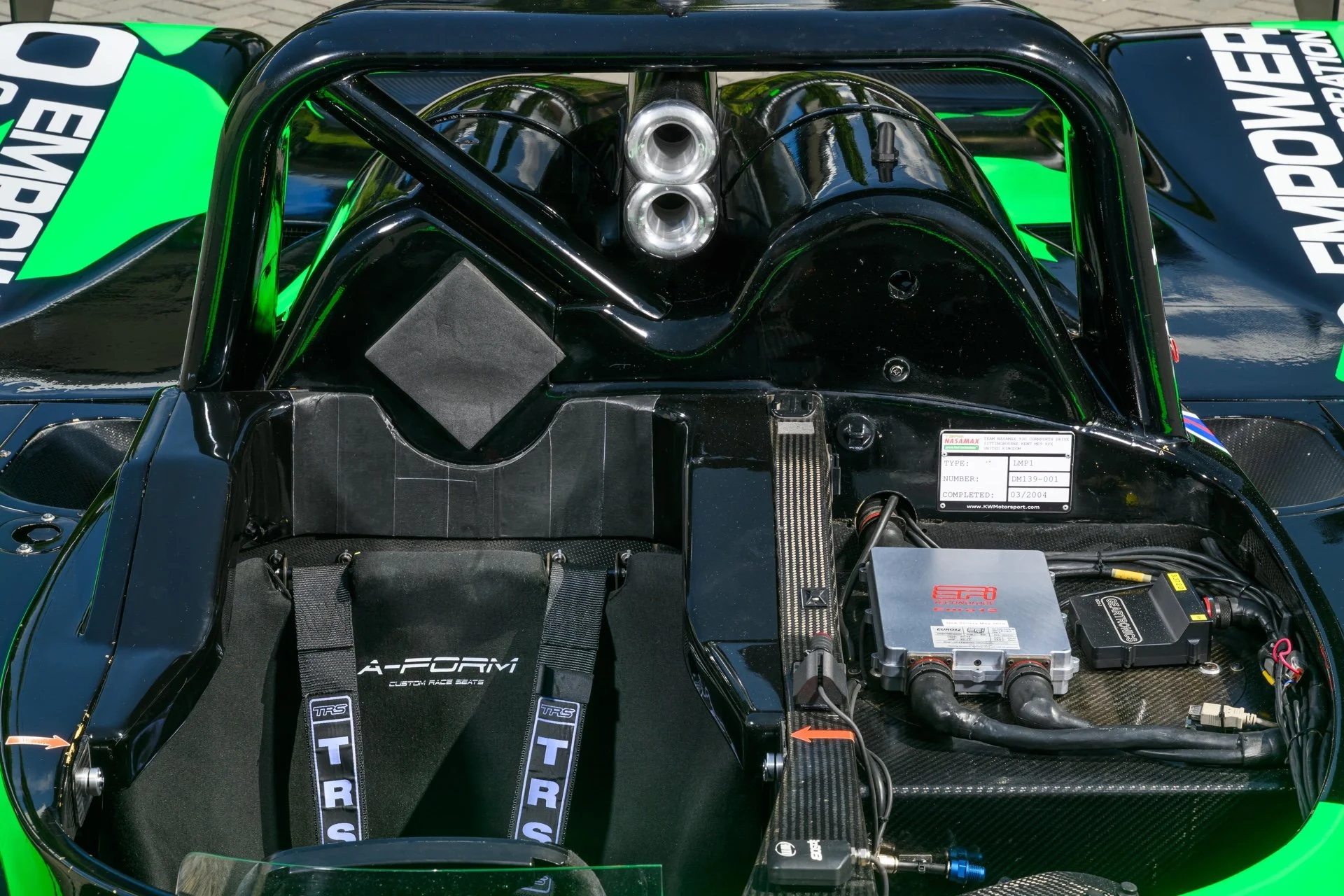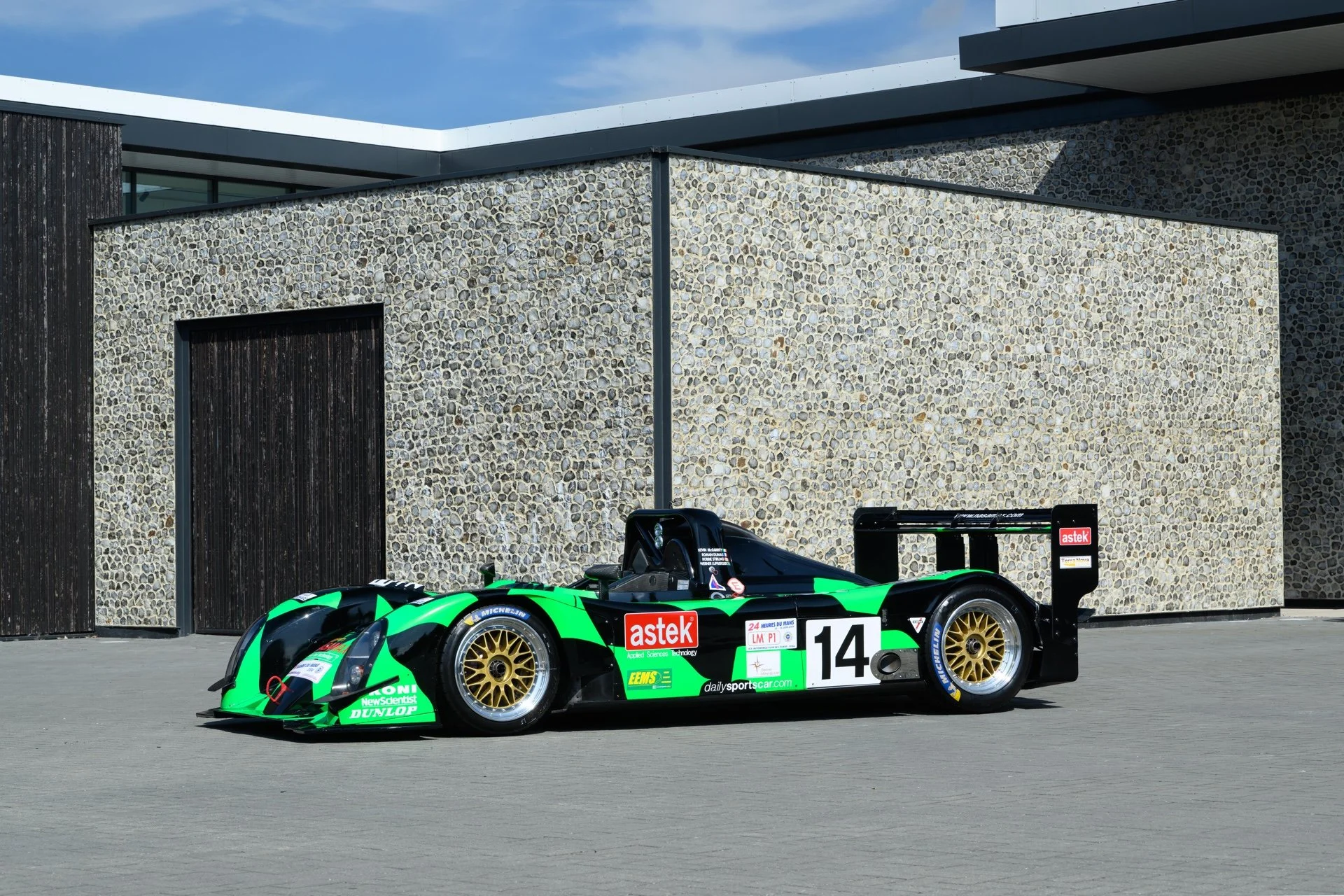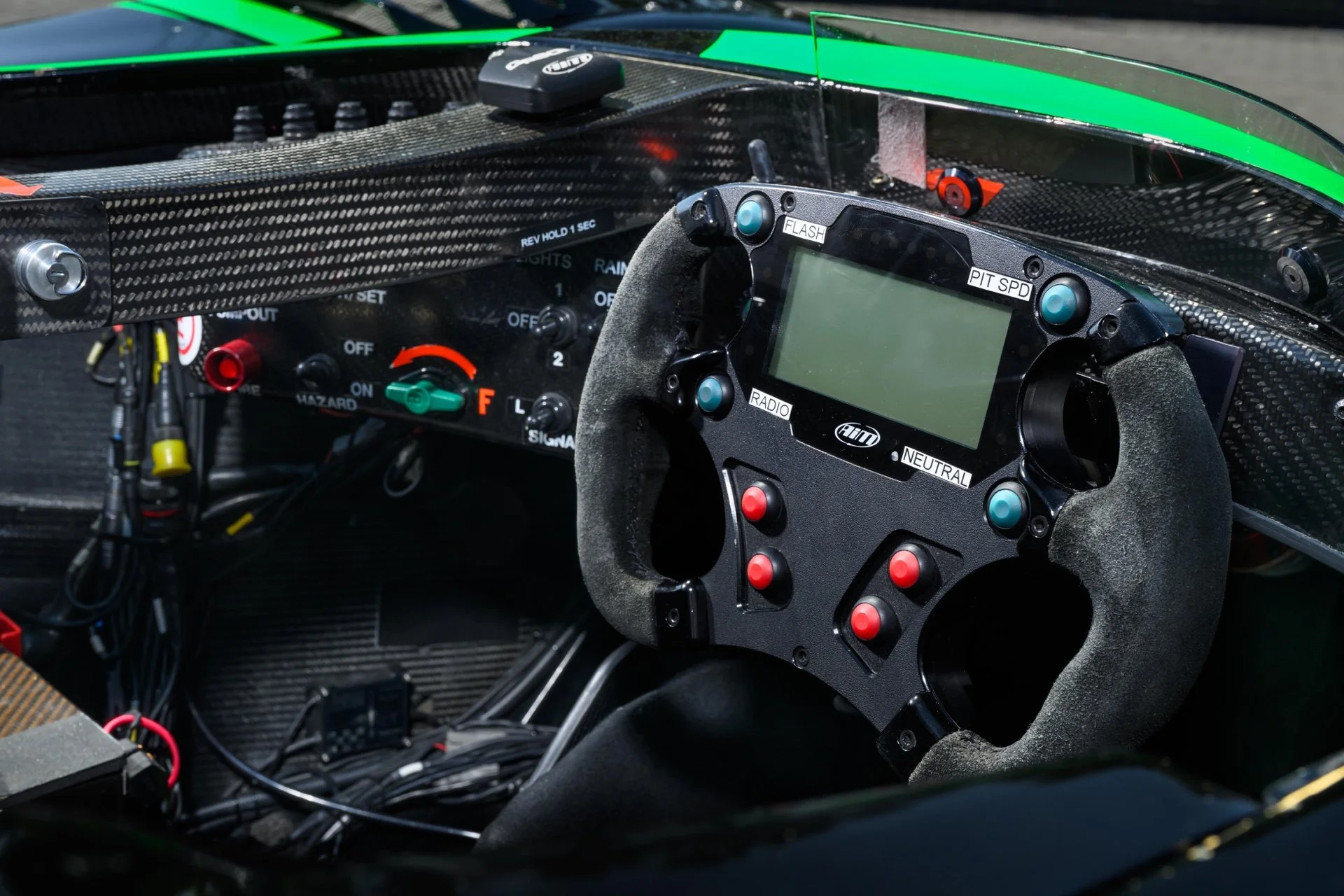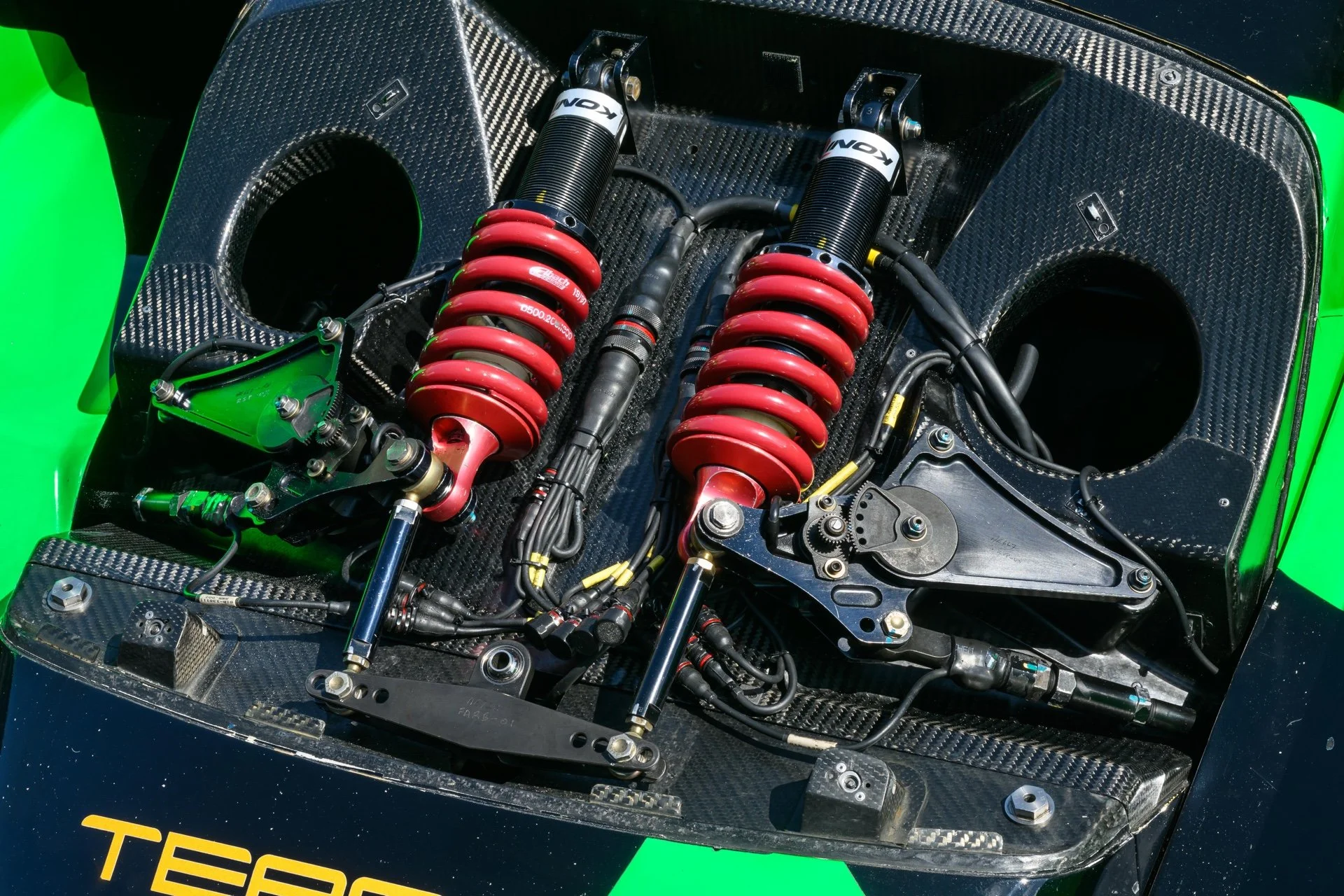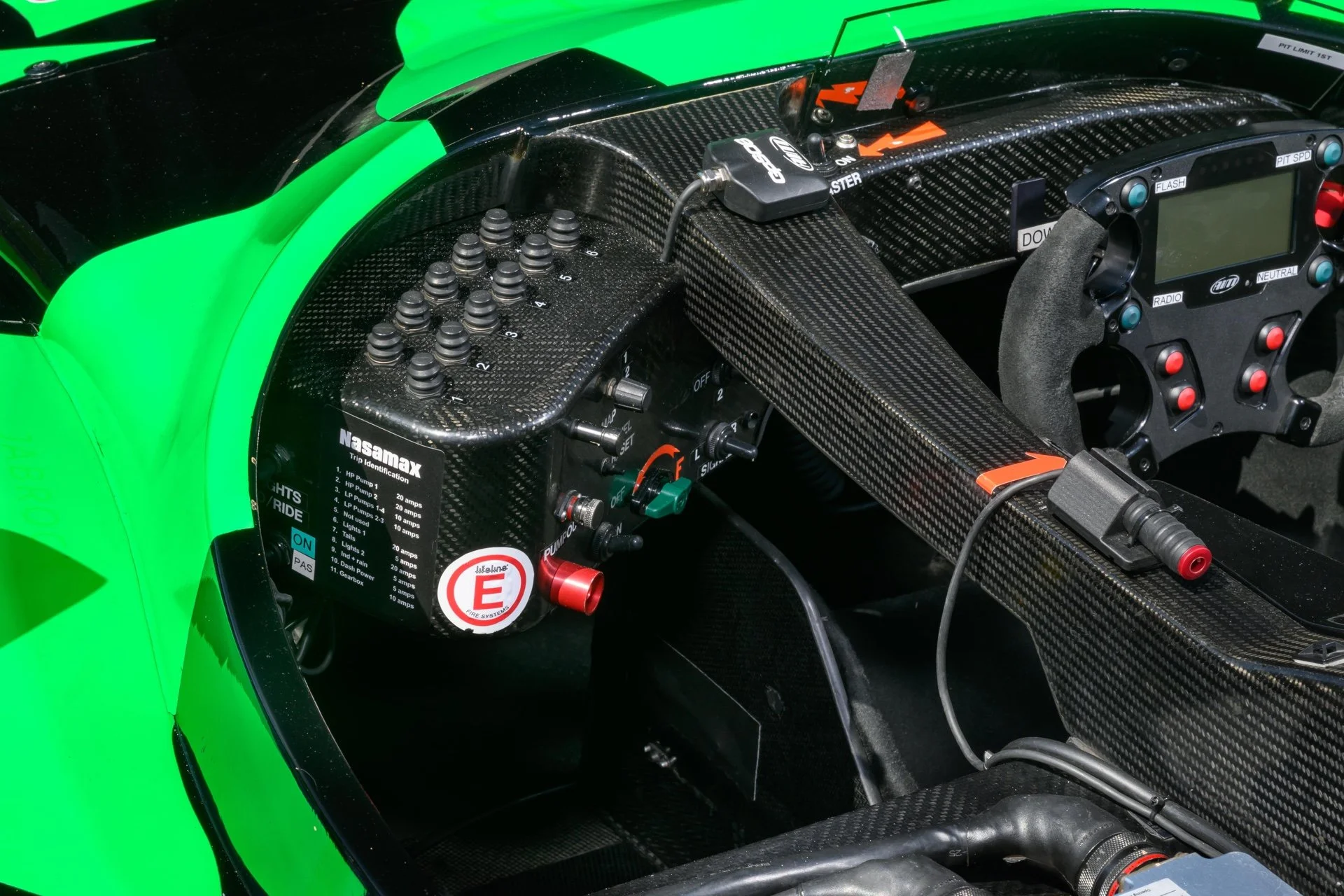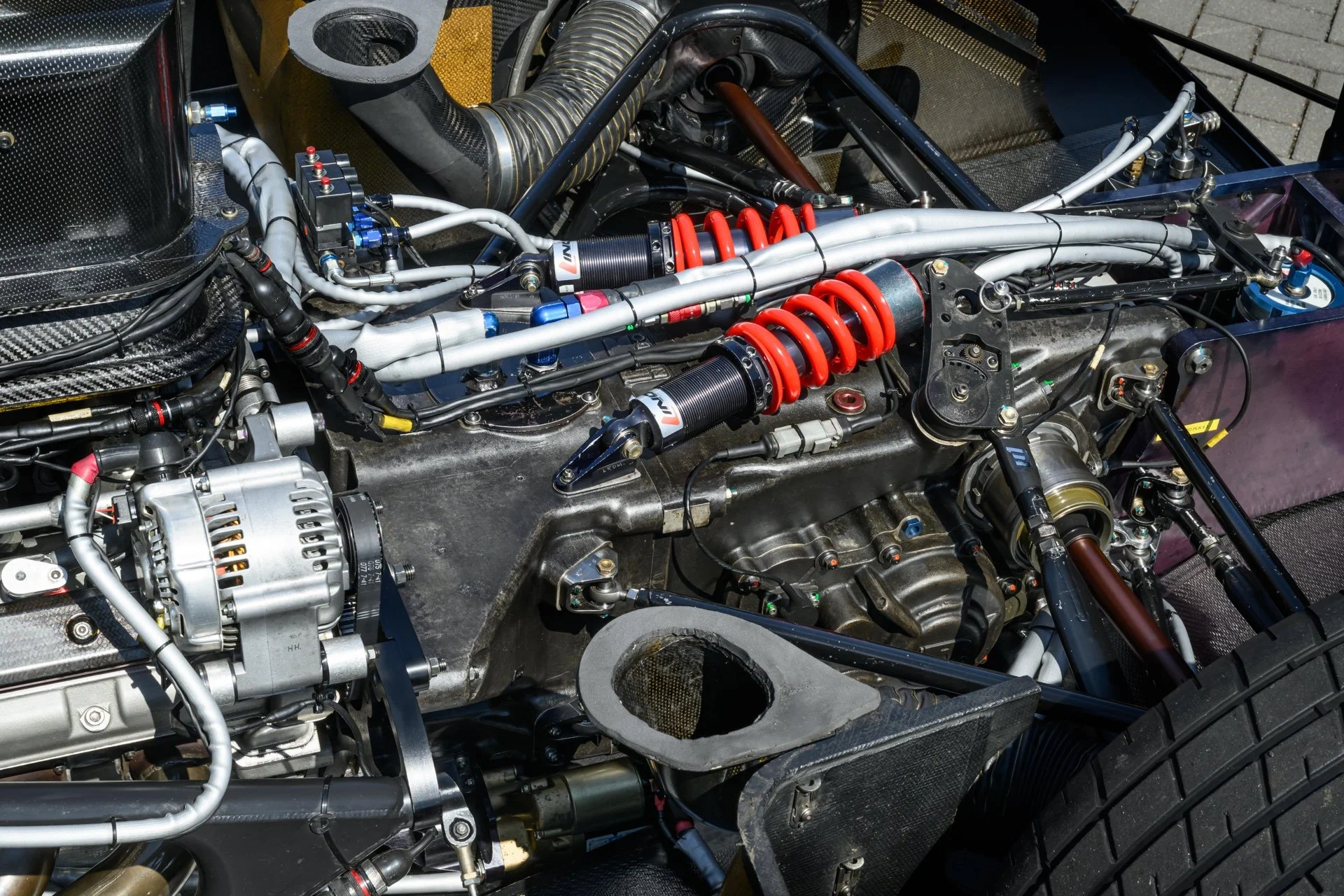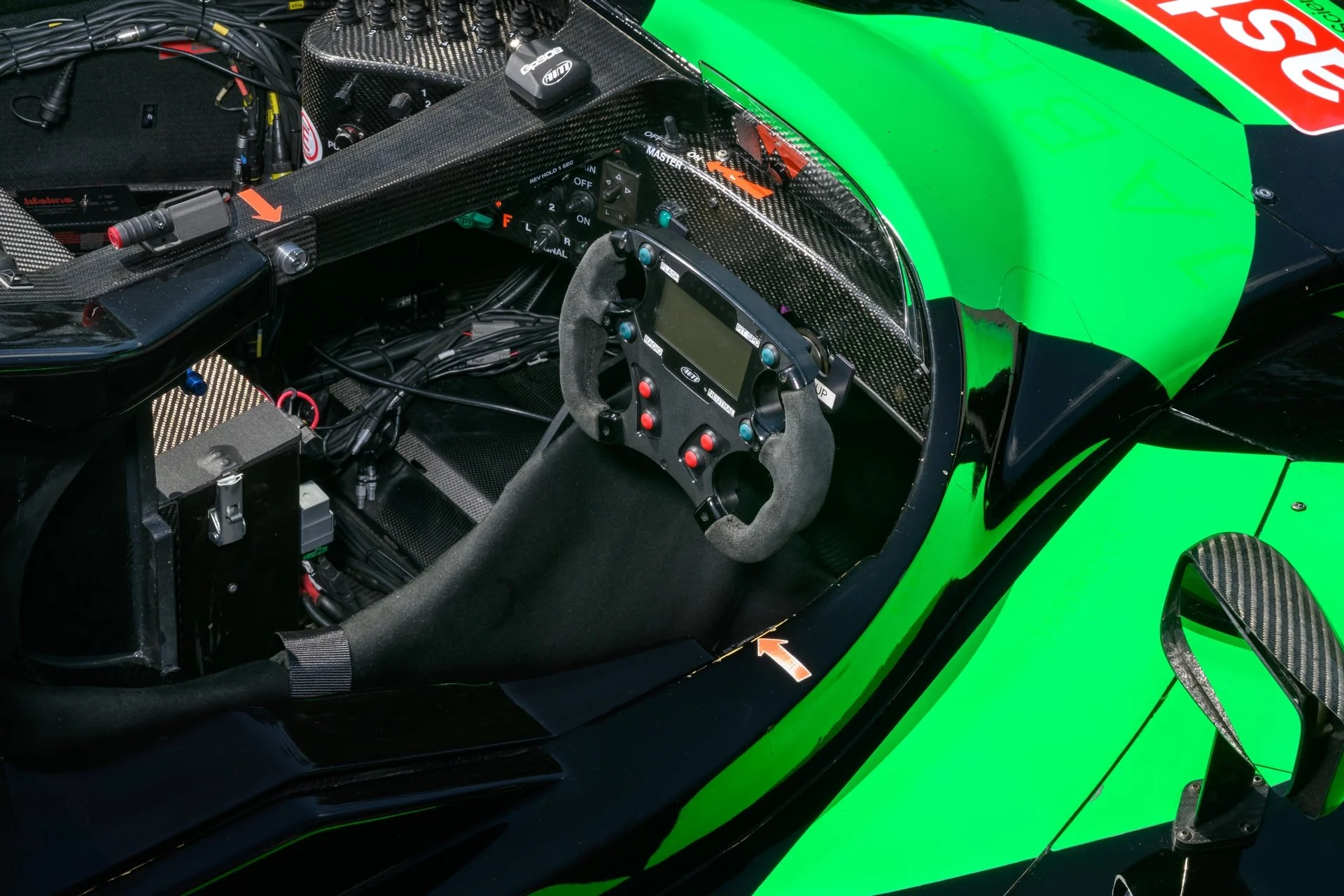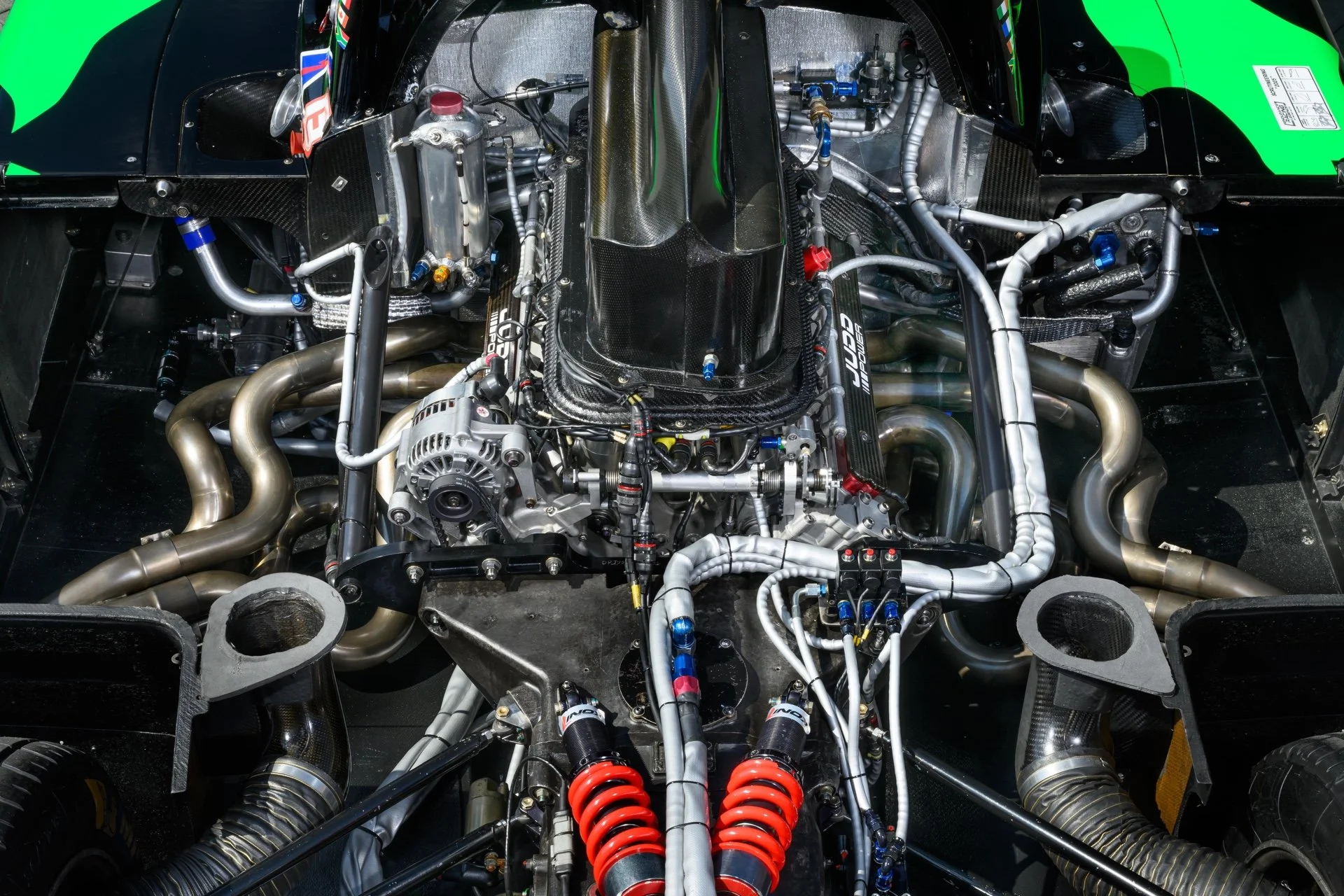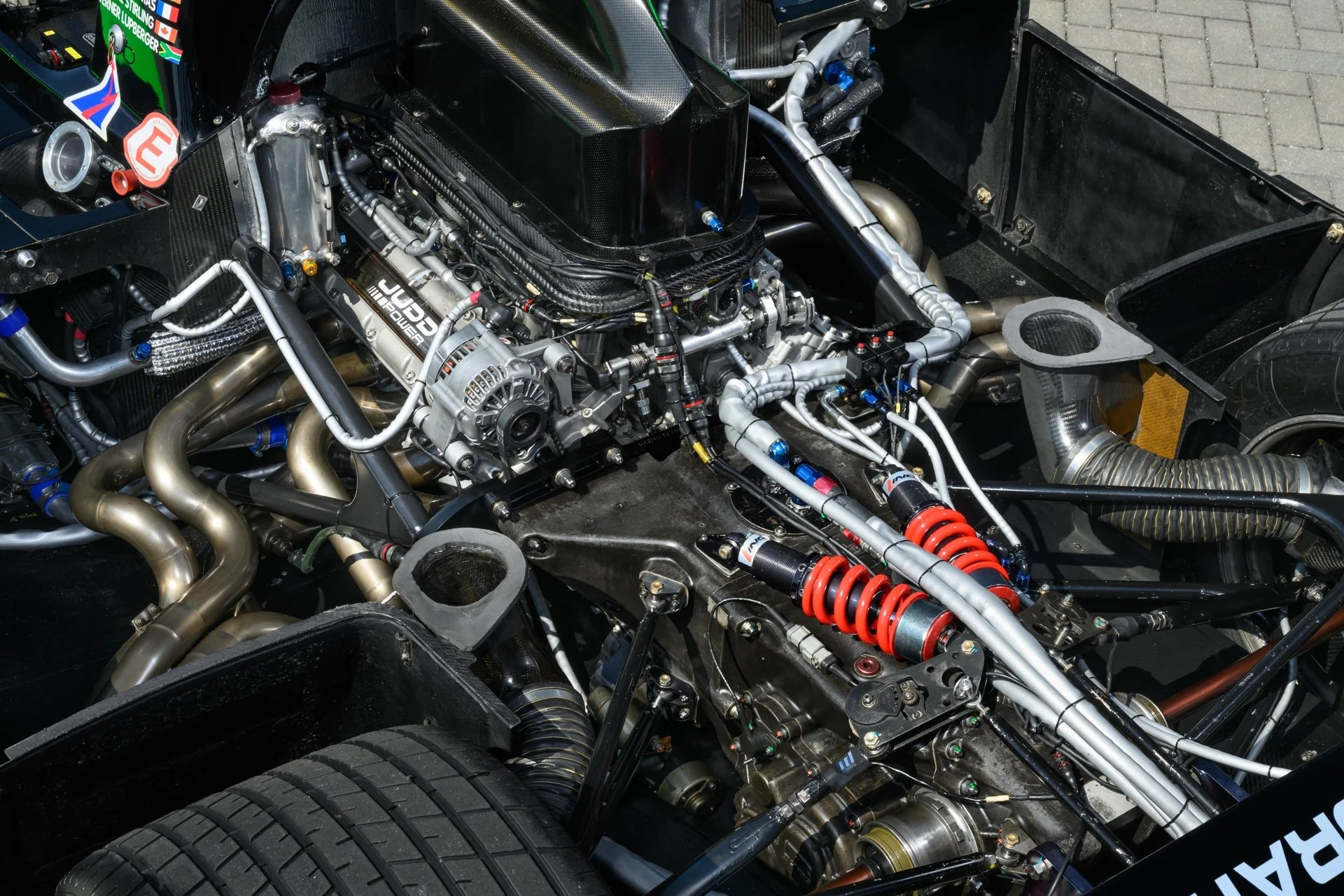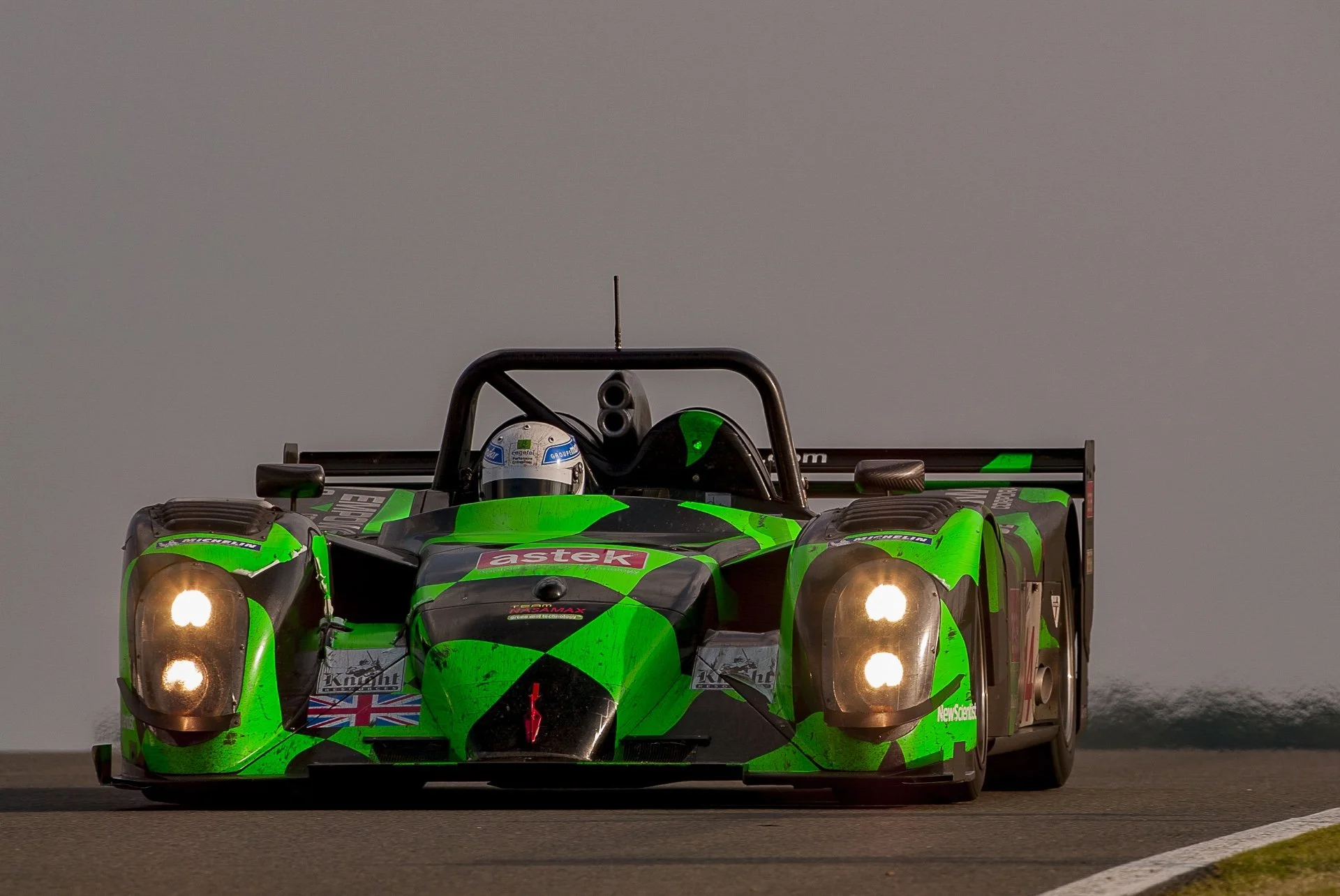2004 Nasamax (Reynard) Judd - LMP1
£ 895,000
The first car to complete the 24 Hours of Le Mans using entirely renewable fuel, and the ACO’s first homologated LMP1 car. Now conventionally fuelled and an established winner in Peter Auto’s Endurance Racing Legends.
OverviewFirst and only car to complete the 24 Hours of Le Mans using 100% renewable fuel (now converted to run on traditional fuel)
First ever LMP1 car homologated - "ACO LMP1 001"
Based on the highly capable Reynard 2KQ-01Q chassis
Powered by Judd’s 5.5-litre, naturally-aspirated V10
Paddle-shift gearbox
A two-time competitor in the 24 Hours of Le Mans and 12 Hours of Sebring
Driven by Le Mans winners Romain Dumas and Guy Smith, and IndyCar star Bryan Herta
Fastest top speed of all cars at Le Mans in 2004
During current ownership, the car has benefited from a comprehensive rebuild and substantial investment totalling almost £500,000 from leading specialists Moto Historics
Now beautifully prepared, with flawless reliability and proven pace, the car has established itself as a perennial front runner in Peter Auto’s Endurance Racing Legends with a pole position and overall race win at Estoril in 2024
Recently recorded a 2m09sec laptime in free practice at the Spa Summer Classic in 2025 (pole position was 2m08.3sec)
Accompanied by a vast and usable spares package, also including bodywork, gearbox casing, period team clothing, memorabilia and more
Eligible for the Peter Auto Endurance Racing Legends, the newly-announced Le Mans Classic Legend, Masters Endurance Legends and, in the US, HSR events including Sebring and Daytona Classics
-
Nasamax chassis DM139-001 started life in 2001 as a Reynard 2QK, chassis no. 2QK-006, powered by a 4-litre Judd V10.
When upgraded to the British manufacturer’s most advanced 01Q specification in preparation for the 2001 FIA Sportscar Championship it became 01Q-001. The car contested six rounds of the championship, primarily with drivers Mark Smithson and Peter Owen, showing some good results against more developed and well-funded competition. Its finest moment came at the 1000kms of Monza, when future Le Mans-winning ‘Bentley Boy’ Guy Smith joined the line-up. The car scored a sensational pole position, before finishing 4th overall to secure the entry its best result of the season.
Unraced in 2002, the car was purchased by Team Nasamax, an organisation formed in 2003 with the aim of proving that racing cars can be competitive on 100% renewable fuels. Headed by scientist and race engineer John McNeil, and based out of Kent in the south- east of England, the Nasamax journey began by fitting the Reynard chassis with an IndyCar-derived, 2.65-litre, turbocharged Cosworth V8 engine powered by bio-ethanol. Cosworth was extremely motivated by the prospect of renewable fuels powering their engines at Le Mans and supported the project in a works capacity.
In this guise, the car contested the 2003 12 Hours of Sebring, driven by IndyCar star Bryan Herta, future two-time Le Mans winner Romain Dumas, and Canadian Robbie Stirling. After a promising qualifying, teething problems led to a non-finish in the race. However, undeterred, the team refocused on the first of the car’s two appearances at Le Mans.
Having taken part in the official test with the same line-up seen at Sebring, Werner Lupberger replaced Herta ahead of the 71st running of the great race. The car qualified 20th at La Sarthe, only for further technical problems to force a retirement, although the car showed impressive top speeds on the long straights of the Mulsanne.
Seizing the opportunity to take advantage of the newly announced LMP1 regulations, the team conducted a major rebuild of the car ahead of the 2004 season to convert the chassis to the new rules. The team formed a new engine partnership with Judd, which fitted its F1-derived 5.0-litre V10, specially adapted to run on bio-ethanol. Newly homologated by the ACO as the first ever LMP1 car, the unique machine was renamed Nasamax DM139 - its nomenclature inspired by the main road that runs through the town of Le Mans.
Fittingly, the Nasamax made its race debut at the 1000km of Monza, scene of the monocoque’s first notable triumph three years prior. With Dumas, Stirling and Lupberger at the wheel, the car showed strongly, finishing the race in a promising eighth position and leaving onlookers with no doubt about the potential of racing cars powered by renewable fuels.
With Dumas unavailable for Le Mans, the team secured the services of former MG factory driver Kevin McGarrity to partner Stirling and Lupberger at the 24-hour enduro. This time the Nasamax excelled, qualifying 14th while clocking the fastest top speeds of all cars along the Mulsanne straight.
In the race, DM139-001 completed 316 laps, finishing 17th overall and seventh in class. In doing so, the car became the first entry to complete the 24 Hours of Le Mans on 100% renewable fuels. An extraordinary achievement that did not go unnoticed by the press – the media frenzy prompting race organiser, the ACO, to conceptualise the now well-established ‘Garage 56’ entry for cars showcasing alternative technologies.
Dumas rejoined Lupberger and Stirling for the final two rounds of the 2004 Le Mans Endurance Series, finishing a strong fifth at Silverstone before a very encouraging performance at Spa was curtailed by an accident while leading the race. Nevertheless, the pace was obvious and the team had proven that cars running renewable fuels were more than capable of competing with those using traditional sources.
-
Since 2004 the car remained in the possession of Robbie Stirling who, in 2018, commissioned the former Nasamax technicians to conduct a complete restoration. Rebuilt from the ground up, it was fitted with a rebuilt 5.5-litre Judd GV5 S2 V10 running on traditional fuels.
Sold to the current vendor in 2023, the car has been meticulously prepared by highly respected specialists Moto Historics, with no expense spared. Over the current vendor’s ownership, the car has received work totalling almost £500,000, which is corroborated by the invoices in the history file. A regular competitor in Peter Auto’s Endurance Racing Legends series, it’s shown race-winning pace, with a pole position and victory in Race 1 at the 2024 Estoril Classics and most recently qualified 3rd overall at the 2025 Spa Summer Classic.
Presented in immaculate condition, DM139-001 is perfect for an immediate and competitive entry into Peter Auto’s Endurance Racing Legends series, Masters Endurance Racing Legends, as well as HSR’s events in the USA. In particular, the prestigious Sebring and Daytona classic events in which it would no doubt be a frontrunner.
-
Technical Passport:
Not applicable
Crack Testing:
Last Date Completed: 2025
Engine Life:
Last rebuild: 2018 when newly fitted by Judd
Current Engine Mileage: 1770.956 kms
Recommended Engine Rebuild Interval: 3,000 – 3,500 kms
Remaining Mileage Available: 1229.044 – 1729.044 kms
Gearbox:
Last rebuild: 2018
Current Engine Mileage: 1770.956 kms
Regularly inspected and maintained by Moto Historics since late 2023
Fuel Cell Certification:
Expiry Date: August 2029
Seatbelt Certification:
Expiry Date: 2029
Fire Extinguisher Certification:
Expiry Date: 2028
Next service: January 2026
-
Category
LMP1Chassis
Carbon fibre monocoqueEngine
5,500cc, Judd GV5 S2 dry-sump V10, producing circa 650 BHPGearbox
Ricardo 6-speed sequential transmission, operated by steering wheel-mounted paddle-shift systemFront suspension
Double wishbones, push-rod actuated springs and dampersRear Suspension
Double wishbones, push-rod actuated springs and dampersElectronics
Original EFI Euro-12 ECU, Geartronic Gearbox electronics, Aim logging system and dashboard, original wiring and data loom (all checked, serviced and fully functional)Brakes
Ventilated carbon discsWeight
906kgs dry weightTyres
Michelin racing slicks/wets (or Goodyear as per new ERL series requirements) -
Le Mans Classic Legend
Newly announced, Le Mans Classic Legend will alternate with Le Mans Classic Heritage each year, focusing on cars that competed between 1976 and 2015. The first edition is to take place in 2026 and is set to carry on the legacy of one of historic racing’s most prestigious events.
Peter Auto’s Endurance Racing Legends
For prototypes up to 2005 and GTs up to 2010, which competed in international sportscar racing. The hugely popular series visits iconic circuits including Spa, Imola and Paul Ricard.
Masters Endurance Legends
For Le Mans Prototypes and GT cars, which competed in the major endurance championships between 1995 and 2016, Masters Endurance Legends holds a full annual calendar of events both in the UK and in Europe. These events take place at some iconic circuits, including Silverstone, Spa and Paul Ricard.
HSR (US)
For modern era GT1/GT2/GT3 & Trans-AM cars, HSR’s Group 9 holds a number of events in the United States, including: Daytona and Sebring Classics, Monterey Rolex Reunion and more. -
This car is accompanied by a vast spares package, including various pieces of bodywork, a gearbox casing, a set of carbon brakes and multiple sets of wheels and tyres, in addition to a plethora of period team memorabilia, press material and more. A full spares and accessories list is available upon request.
-
Car Location: this car is located at our Petersfield showrooms in Hampshire, United Kingdom, where viewings are welcome by appointment. We are 45 minutes from Heathrow and just 20 minutes from Goodwood!
Taxes: UK
The Nasamax is accompanied by a vast spare parts package.
Sam Says“ Paddle-shift, a 5.5 litre Judd V10, fascinating period history, proven pace in Peter Auto ERL, accompanied by a vast spares package, and now beautifully prepared by MotoHistorics following substantial investment by the vendor. Oh, and it just clocked a 2m09sec lap time in testing at Spa. If you are seeking a full-blooded LMP1 experience and long to drive at 200mph along the Mulsanne straight, this is an unbeatable package at this price point. ”
GallEryperiod imagesEnquiriesFor further information, please don’t hesitate to contact us.
ImagesTim Scott


